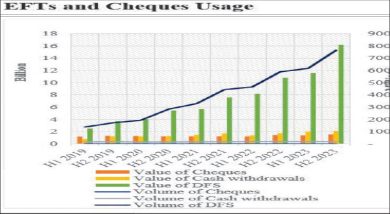MSE: Is it proving weak or resilient to economic changes?
The financial market in Malawi has lately been described as very uncertain; with commentators pointing out that it is a difficult environment for one to comfortably come up with stable investment decisions and forecasts. The financial market includes money market, stock market and the foreign exchange market.
The devaluation and floatation of the local currency in May last year and its subsequent depreciation turned around a lot of fundamentals on the financial market. For instance, inflation took a sharp upward shift from 17.3 percent in May 2012 to 35.8 percent as at end of April 2013. The base rate, which hovered around 13 percent in May 2012 inched 12 percentage points to 25 percent as at the end of May 2013. Banks and discount houses had to match their investments rates against that of Reserve Bank of Malawi’s ( RBM) treasury bill (T-bill) rate.
The All-type T-bill rate has moved up from 12.6 percent as at end May 2012 to 36.4 percent as at end of April 2013. These changes resulted in very attractive investment rates on the money market. Many of the investors who deployed short to medium-term investment strategies seriously participated and are still participating on the money market, where they are getting notable returns.
Most of us know that the money market offers direct and stiff competition to the stock market. Looking at this change in fundamentals and attractiveness of the money market from last year, does it translate to instant death for the stock market? Can we say that all players have indeed shifted their full sight onto the money market and completely ignored the stock market?
Interest rates affect almost everything in the economy from investments, borrowing to employment.
The general anticipation from most players last year when the interest rates were increasing was that investors would dump the stock market and go full throttle on the money market. No one expected to see foreign portfolio investors or the local institutional players seriously participating on the stock market as things turned around. However, when you look at the general performance of the market, from January to April 2013 and compare it with the corresponding performance for January to April 2012 (devaluation and floatation of the kwacha), you will find something strange and actually opposing to what the fundamentals are saying.
The critical factor to focus upon is liquidity. Market liquidity refers to how easily a security, or investment, can be sold and converted to cash without having much impact on the value or price. If a security is liquid, it means an investor can have immediate access to money since the investment can be sold quickly at a fair market price. The level of market liquidity can be influenced by the amount of trading activity associated with the security. Market liquidity is also related to liquidity risk, which involves the possibility that a security cannot be easily sold. This is usually measured by the turnover velocity (ratio of total trades to market capitalisation).
If we look at the first quarter of 2013, the Malawi Stock Exchange (MSE) recorded a turnover velocity of 4.41 percent, which is higher than the 1.27 percent that was recorded during the first quarter of 2012. The return on index remained positive at 5.47 percent though this was lower than the 5.54 percent that was reported during the first quarter of 2012. During the same first quarter of 2013, 2.1 billion shares changed hands in 179 deals compared to the 66.3 million shares that changed hands in 384 deals during the first quarter of 2012. The deals in first quarter of 2013 resulted in a total consideration of K2.9 billion ($7.4 million), which is more than the K760.7 million ($4.5 million) recorded during the first quarter of 2012, before the changes in market fundamentals. Except for Real Insurance and Sunbird, all the 12 counters on the MSE registered activity and most of them with notable volumes.
One thing that investors should always keep in mind is that, when fundamentals change, opportunities arise at the same time. For instance, the rise in interest rates resulted in an attractive money market and high cost of borrowing. Towards the end of the second half of 2012 we saw most of the listed commercial banks issuing trading statements that gave a clue to some notable performance at the end of 2012.





